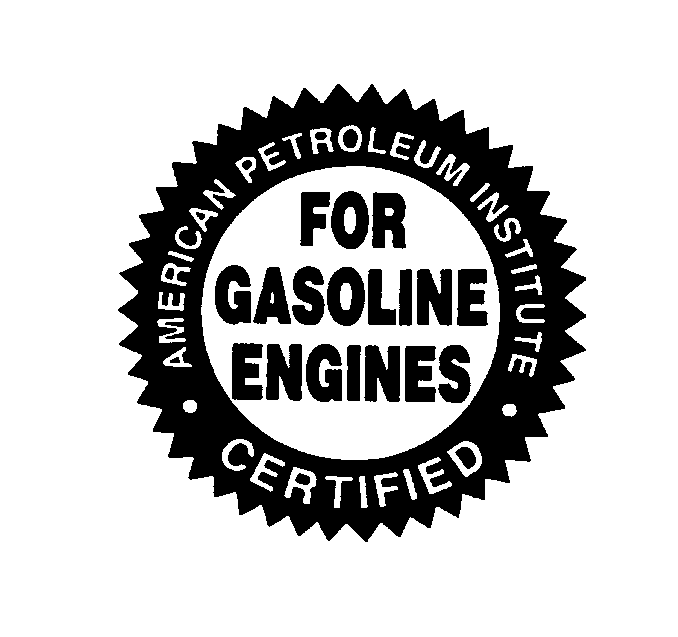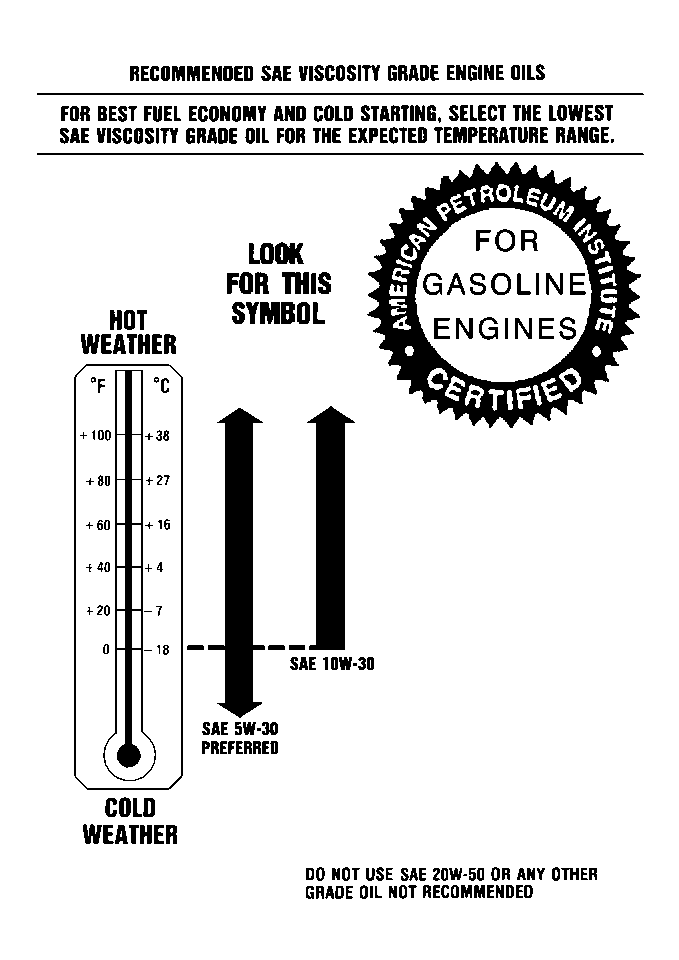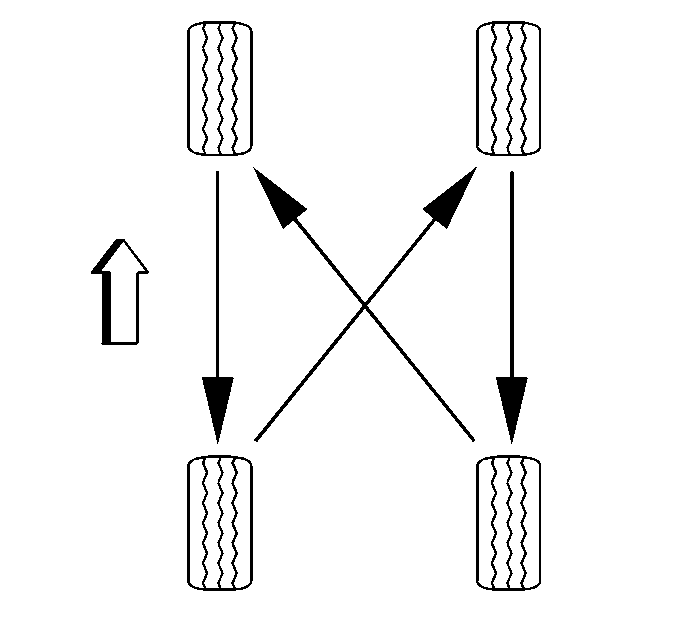For time and/or mileage intervals of scheduled maintenance items, refer to Maintenance Schedule .
The following text and illustrations describe the details of the required scheduled maintenance services.
For information on the proper fluids and lubricants to use, refer to Fluid and Lubricant Recommendations .
Engine Oil and Filter Change
For the engine oil and filter changing procedure, refer to Engine Oil and Oil Filter Replacement in Engine Mechanical.
For information on the correct engine oil quality and viscosity, refer to the following:
Gasoline Engine Oil Quality
Notice: Use only engine oil with the American Petroleum Institute Certified for Gasoline Engines starburst symbol. Failure to use the recommended oil can result in engine damage not covered by the warranty.

The STARBURST symbol indicates that the oil has been certified by the American Petroleum Institute (API). Do not use any oil which does not carry the STARBURST symbol.
Gasoline Engine Oil Viscosity

Engine oil viscosity thickness has an effect on fuel economy and cold-weather operation engine starting and oil flow. Lower viscosity engine oils can provide better fuel economy and cold-weather performance. However, higher temperature weather conditions require higher viscosity engine oils for satisfactory lubrication.
SAE 10W-30 is best for your vehicle. However, use 5W-30 if the outside temperature regularly falls below 18°C (0°F). Do not use other viscosity oils.
Notice: Using oils of any viscosity other than those recommended could result in engine damage. When choosing an oil, consider the range of temperatures the vehicle will be operated in before the next oil change. Then, select the recommended oil viscosity.
Important: If your vehicle is operated in an area where the temperature falls below -29°C (-20°F), consider using a SAE 5W-30 synthetic oil or a SAE 10W-30. Both will provide easier cold starting and better protection for the engine at extremely low temperatures.
Tire and Wheel Inspection and Rotation

Check the tires for abnormal wear or damage. Rotate the tires to equalize the wear and obtain maximum tire life.
Accessory Drive Belt Inspection
Inspect the accessory drive belts for the following:
| • | Cracks |
| • | Fraying |
| • | Wear |
| • | Proper tension |
Replace accessory drive belt as needed. Belts can have many small cracks in individual ribs without affecting the performance.
Automatic Transmission
Change both the fluid and the filter according to the maintenance schedule intervals.
For time and/or mileage intervals of scheduled maintenance items, refer to Maintenance Schedule .
For information on the proper fluids and lubricants to use, refer to Fluid and Lubricant Recommendations .
Spark Plug Replacement
Replace the spark plugs according to the maintenance schedule intervals.
For time and/or mileage intervals of scheduled maintenance items, refer to Maintenance Schedule .
Spark Plug Wire Inspection
Clean the spark plug wires and inspect for burns, cracks or other damage. Check the wire boot fit at the coils and at the spark plugs.
Air Cleaner Filter Replacement
Replace the air cleaner filter according to the maintenance schedule intervals with the correct type. For maintenance schedule information, refer to Maintenance Schedule .
